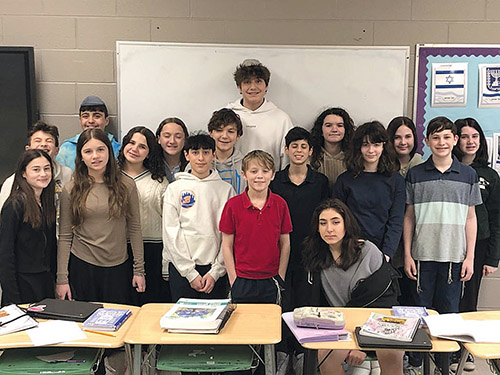
In Ben Porat Yosef, the seventh grade students have been learning the first Mishna of Masechet Pesachim about bedikat chametz. The Mishna teaches that we check for chametz by the light of a candle. We may not use a torch for the bedika for two reasons: first, with a torch one cannot see into small holes and cracks, and second, one can hold a candle in front of the searcher whereas a torch’s light is so great that one cannot hold the torch so close and look beyond it.
What about using a flashlight to check for chametz? The class had a lively discussion that led to a debate. The class was divided into two groups, one pro-flashlight and one anti-flashlight. Each group explained its opinion and supported its claims with views from different chachamim, each with powerful arguments.
The pro-flashlight group claimed that a flashlight can provide more light, lasting longer, with a directed beam and in many cases, it’s smaller than a candle. Their main idea was that the Gemara states that a torch can burn the house down when looking for chametz, and a candle presents less of a fire hazard. Still, there is a chance that something can catch fire with a candle, which makes flashlights even safer. They also proved that using a candle in specific is not mandatory, since there are halachic opinions that allow the use of a flashlight (Halichot Shlomo vol 1, 5:11).
The anti-flashlight group stated that because nobody used flashlights in olden times—flashlights were not yet invented—we should therefore use candles to pass on the tradition of our ancestors. Because the halachot do not specify flashlights, we should preserve our tradition of old. Furthermore, the Mishnah Berurah (433:12) comments on the words of the Rama who forbids using two candles that are woven together, because they have the status of a torch. He writes, “and even a candle that has two wicks, such as the candles that are sometimes made nowadays of fat, where there is a space between the wicks, it is considered a [forbidden] torch.” Based on this it seemed to this group of students that a flashlight that is made up of several small bulbs should be forbidden.
What can we learn from both perspectives? By using a candle, perhaps we can be more nostalgically connected to the process of finding chametz, passing down a beautiful tradition. By using a flashlight, we can find chametz more easily and safely. Both sides make excellent points, and as is often the case, a qualified posek should be consulted to plan for this mitzvah. Chag Kasher V’Sameach!
By Rabbi Ilan Acoca













